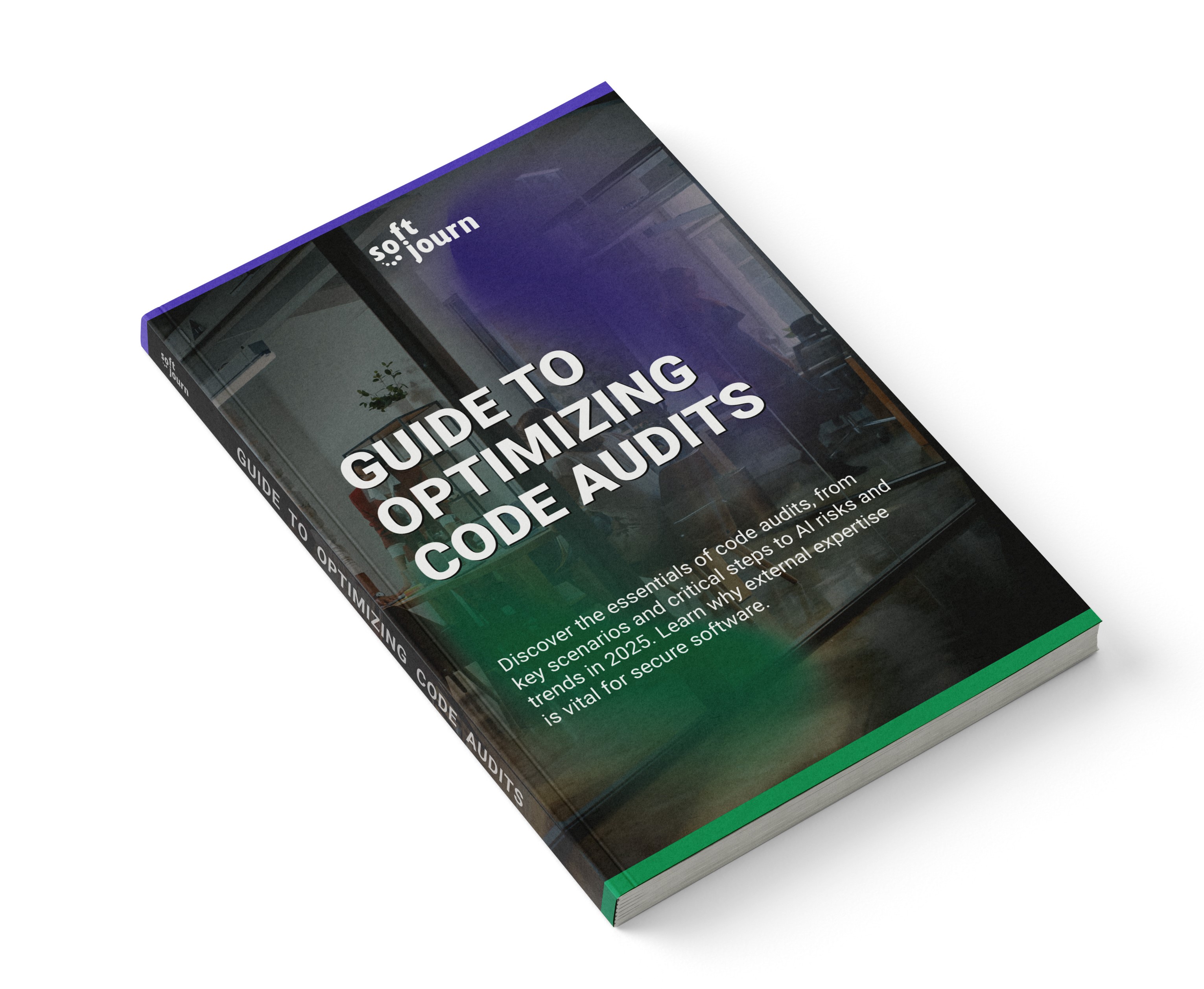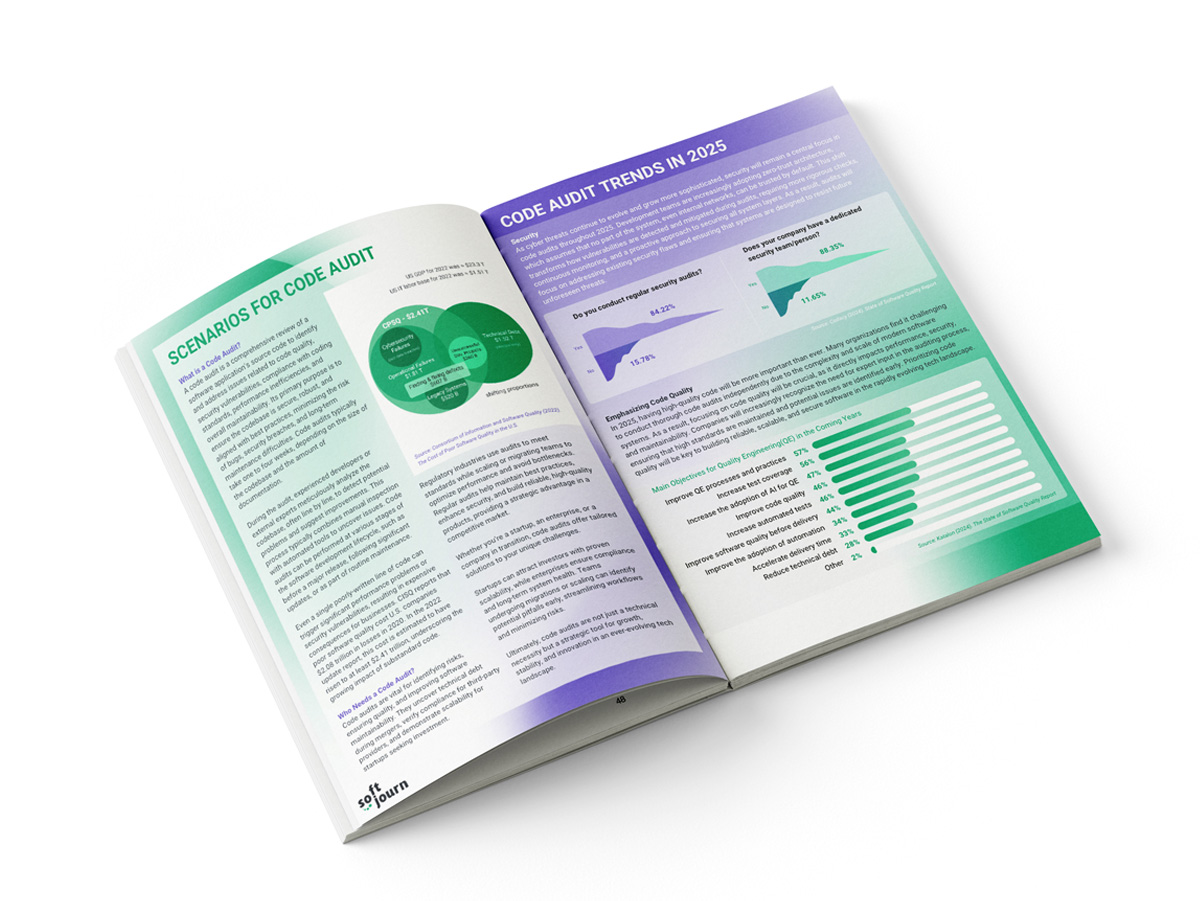Unlock the Full Potential of Your Code Audits
The demand for secure, efficient, and scalable software is at an all-time high. Yet, many businesses struggle with costly inefficiencies, security vulnerabilities, and outdated practices when auditing their codebases. How can you ensure your code audit process is optimized for maximum impact?
Softjourn’s research, combined with insights from over 90 sources, dives deep into the evolving landscape of code audits.
Our guide provides actionable insights and expert recommendations to help companies streamline their audit processes, reduce risks, improve software maintainability, and ensure compliance with industry standards.
What’s Inside the Report?
- Common scenarios for code audits and when they are essential
- The critical steps in a successful audit process
- Key challenges in auditing and how to overcome them
- Code audit trends shaping 2025 and beyond
- The role of AI in code audits—opportunities and hidden dangers
- Why external code audits can provide unmatched insights

With rising cyber threats, growing technical debt, and ever-evolving development standards, businesses can no longer afford inefficient code audits. A poorly conducted audit can lead to security gaps, performance issues, and compliance failures—resulting in substantial avoidable expenses and long-term technical debt.
But a well-executed code audit is more than just a health check—it’s a strategic advantage. By identifying vulnerabilities before they become costly problems, businesses can enhance security, optimize performance, and future-proof their applications.
Whether you're scaling an existing system, preparing for an investment round, or ensuring compliance with GDPR, HIPAA, or PCI-DSS, a structured audit process is essential to mitigating risk and driving innovation.
Who Should Read This?
CTOs & Tech Leads – Optimize audit workflows and enforce best practices
Software Engineers & DevOps Teams – Identify and fix code inefficiencies early
CISOs & Security Experts – Strengthen security protocols and detect vulnerabilities
Product & Project Managers – Ensure software quality aligns with business goals
Investors & M&A Teams – Assess the technical quality of potential acquisitions




_Versapay.png)

